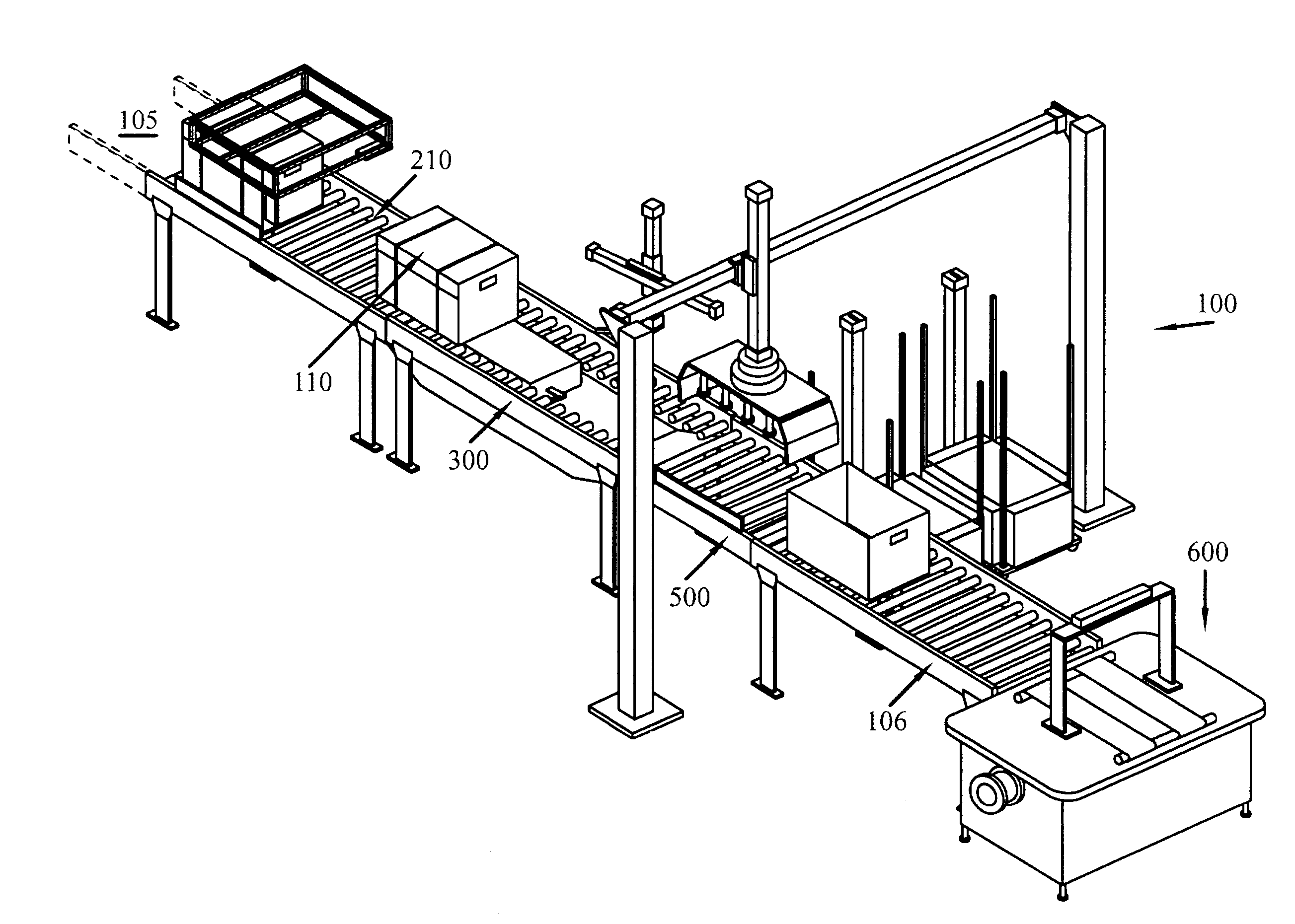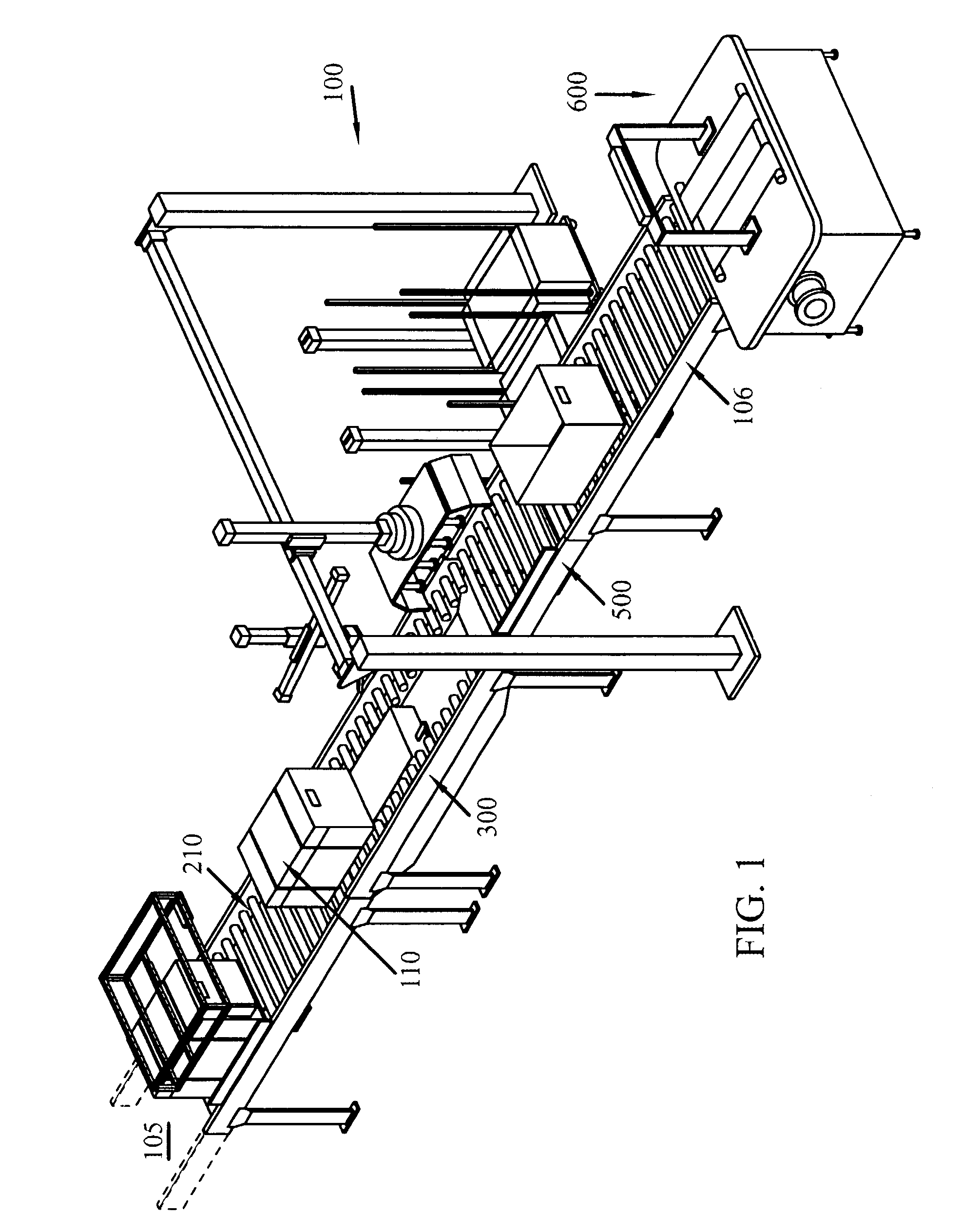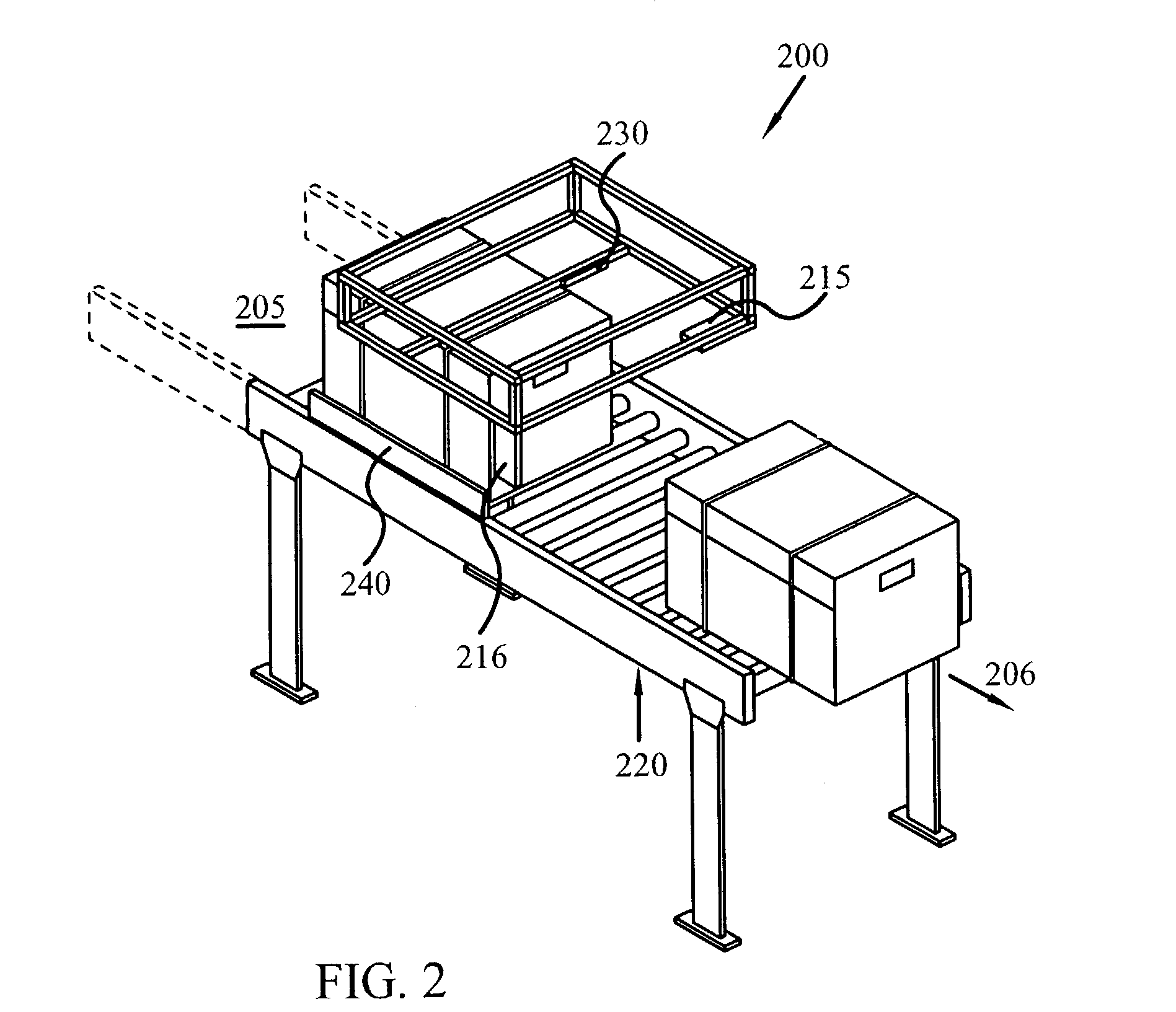Container strap cutting method
a cutting method and container strap technology, applied in the field of handling, routing and shipping containers, can solve the problems of high rate, high rate, repetitive tasks, etc., and achieve the effect of high ra
- Summary
- Abstract
- Description
- Claims
- Application Information
AI Technical Summary
Benefits of technology
Problems solved by technology
Method used
Image
Examples
Embodiment Construction
[0023]Reference will now be made in detail to exemplary embodiments of the invention, examples of which are illustrated in the accompanying drawings. Wherever possible, the same reference numbers will be used throughout the drawings to refer to the same or like parts.
[0024]Referring initially to FIG. 1 there is shown an embodiment of the present invention comprising a lidding device 100, or Lidder / Un-Lidder system or Lidder on Un-Lidder. In one embodiment, the Lidder / Un-Lidder has a single module which incorporates all functions in a self-contained system. The single module may contain separate subsystems. Subsystem stations of lidding device 100 include tray transport / tray sizing / lid detection station 200 seen in FIG. 2 destrapping station 300, lid station 500, and tray exit / strapper 600. As shown in FIG. 1 the linear arrangement of lidding device 100 allows a workpiece to pass through the device, passing as it does, each of the subsystem stations. In an alternative arrangement the...
PUM
 Login to View More
Login to View More Abstract
Description
Claims
Application Information
 Login to View More
Login to View More - R&D
- Intellectual Property
- Life Sciences
- Materials
- Tech Scout
- Unparalleled Data Quality
- Higher Quality Content
- 60% Fewer Hallucinations
Browse by: Latest US Patents, China's latest patents, Technical Efficacy Thesaurus, Application Domain, Technology Topic, Popular Technical Reports.
© 2025 PatSnap. All rights reserved.Legal|Privacy policy|Modern Slavery Act Transparency Statement|Sitemap|About US| Contact US: help@patsnap.com



